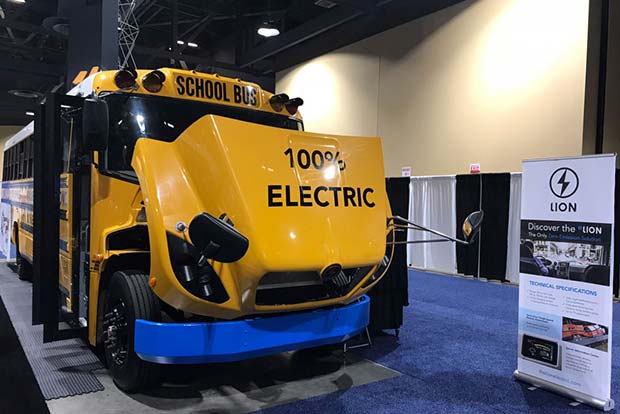The California Air Resources Board (CARB) funding program has just gone through a major chance. In a landmark alteration, rural school districts in California can now receive as much as $400,000 in CARB funding. This could be used, for example, to offset the full cost of a new electrified school bus for the students.
This comes via the Lower Emissions School Bus Program, a program which is being managed by the state’ cap-and-trade dollars, and is said to exceed the $1bn mark. This major announcement was made during the wildly popular Advanced Clean Transportation EXPO’ The Lion Electric Company Booth.
The project, the Rural School Bus Pilot Project, has been administered by the North Coast Unified Air Quality Management District, and has received around $25m in cap-and-trade funding. This will help to remove the oldest dirtiest and most damaging diesel school buses offer the road from rural and small school district locations.
With around half of these serving neighborhoods with low incomes and disadvantaged children, these funds will play a major role in determining and improving the experience overall. The long-term aim of the program is to try and help minimize the stress of up-front purchase costs, not only for the electric school bus programs but also for hydrogen-powered transit buses and also electric truck programs.
At present, this has produced over 150 cleaner school buses across the state, with at least 60 of them funded by the Rural School Bus Pilot Project itself. With nineteen of the busses also coming with electric battery models via The Lion Electric Company, seven other buses are driven by using a renewable source of fuel.
At the time of writing, the remainder of the buses needed have yet to be verified or confirmed at this time of writing. These buses, though, are wonderfully efficient. With around 100 miles in a single charge, they are easy to keep running and provides the schools with a more economically and environmentally friendly solution.
The Lion Electric Company has continued to forage forward with their new FirstPriority Gleen Fleet-joint project of the eLionM. Delivered on a monocoque chassis, this low-floor solution will carry 22 passengers at any one time. The hope is that, in time, they will be able to add a new battery option to the eLionM that can take as much as 225 miles per charge.
Other major options appearing for the electric school bus industry includes the Thomas Built Buses, IC Bus and Blue Bird models alongside Greenpower. We expect to see major production scale up and explode in the next few years, as electric buses become an affordable and essential part of the industry.
With eco-friendly travel becoming more and more important, it’s vital that such programs can continue to grow and give people the opportunity to tap into a very important and environmentally conscious system. Thanks to programs like the ones listed above, the future of school buses may become far more environmentally capable than the gas-guzzling models used across the country at present.
